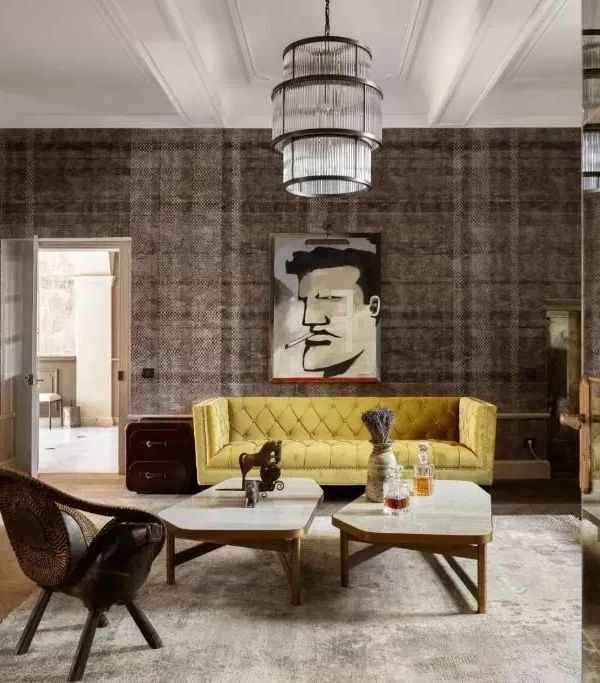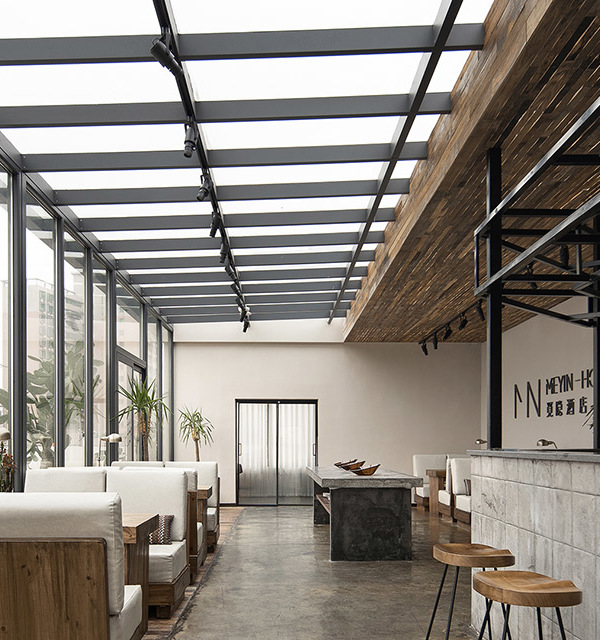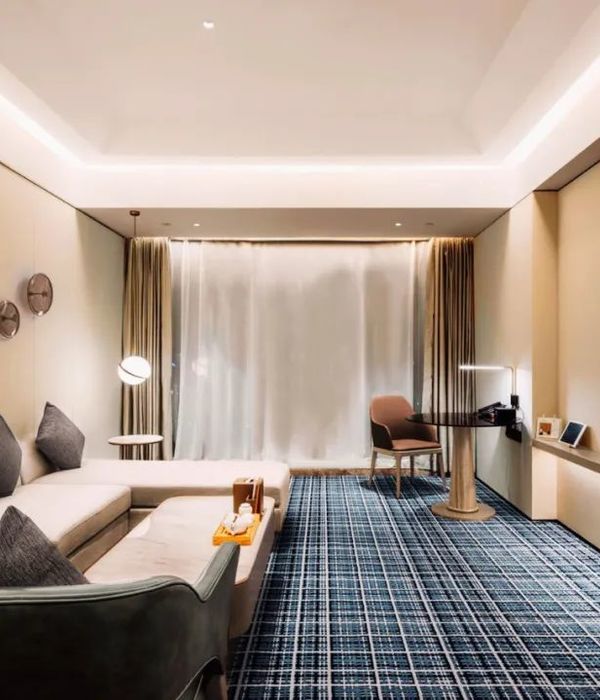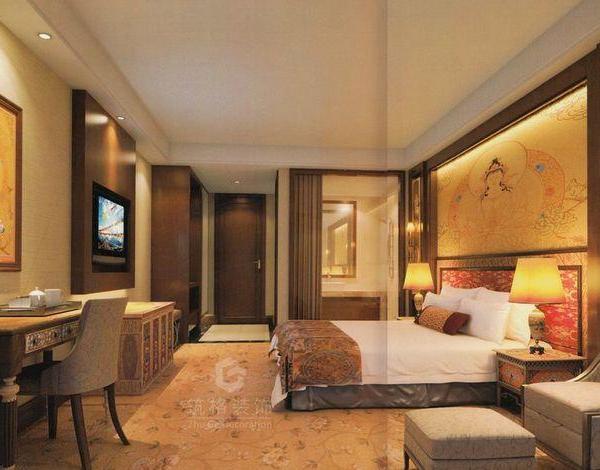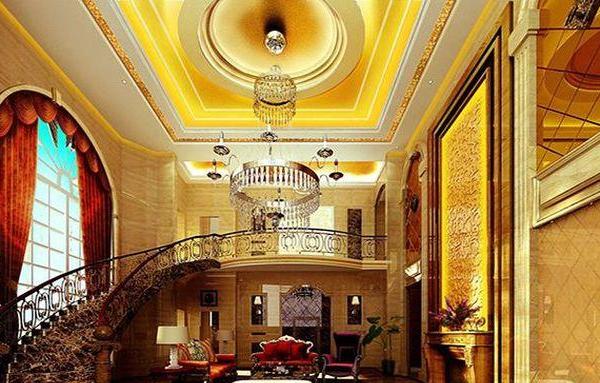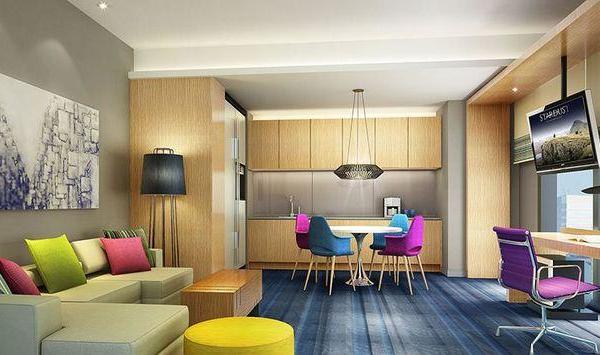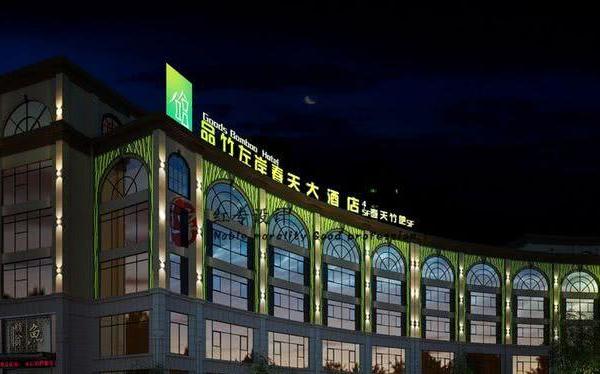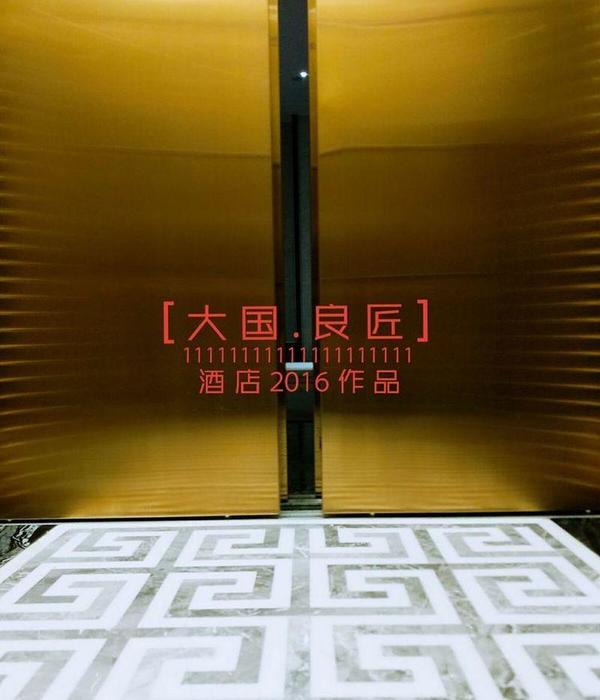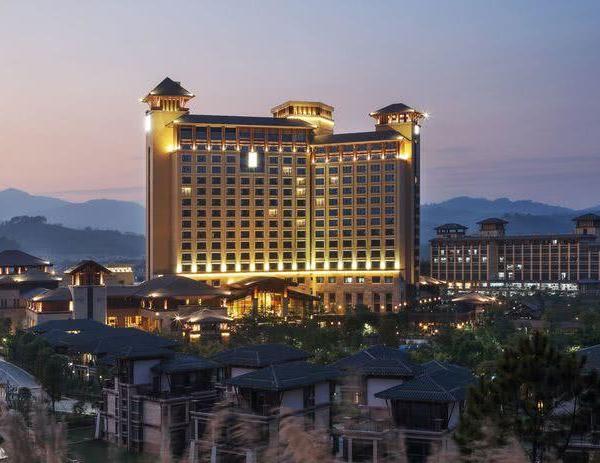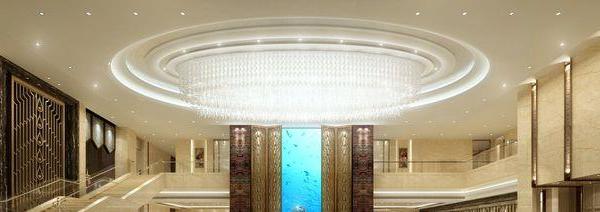Château Champlain酒店所在建筑最初由魁北克建筑师D’Astous和Jean-Paul Pothier在1967年世界博览会期间设计,因其标志性的结构和技术上的成就而受到瞩目。这座高128米的建筑共包含38个楼层,曾经是加拿大最高的酒店。在今天,它凭借着富有韵律感的半月形窗户和温莎车站的新罗马式拱门,在蒙特利尔市中心继续吸引着来往行人的目光。这些被人们称作“奶酪刨”的拱形窗框模拟了阳台的外观,是本次Sid Lee Architecture创作的设计叙事的核心元素。
Originally designed by Quebec architects Rogers D’Astous and Jean-Paul Pothier in 1967 at the time of the world’s fair, the Château Champlain is notable for its iconic structure and technical accomplishments. Overlooking the city from the top of its 128-meter, 38-story height, the hotel was once the tallest in Canada. Today, it continues to catch the eye of passers-by downtown with its rhythmic half-moon windows and the neo-Roman arches of Windsor station. Earning the nickname of “the cheese grater,” these window frames simulating the look of balconies were put at the core of the design narrative created by Sid Lee Architecture.
▼酒店大堂,Lobby © MAXIME BROUILLET
酒店入口处的拱门和地板采用了精心挑选的陶瓷和白色冰纹石面。灯具和固定家具点缀以金色元素,为空间带来温暖的触感,使人联想到映照在雪地上的灯光。
At the hotel’s entrance, porcelain and finely veined white stone with the appearance of icy surfaces were carefully selected to cover the arches and floor. On the lighting fixtures and in integrated furnishings, golden accents reminiscent of bare branches punctuate the space with warm touches, evoking reflections of light on the snow.
▼拱顶走廊,the arches © MAXIME BROUILLET
接待台后方是由Sid Lee Architecture与MASSIVart合作设计、艺术家Pascale Girardin制作的装置作品,以精致细腻的姿态为酒店的体验奠定了基调。
Behind the reception counter, an art piece designed by Sid Lee Architecture, in collaboration with MASSIVart and executed by artist Pascale Girardin, rises delicately and sets the tone for visitors’ experience of the hotel.
▼接待台,reception © MAXIME BROUILLET
开放的多功能厅Greatroom为游客提供了在城市中漫游般的体验,其设计细节展现了对有机的外部环境的参考。木制的镂空屏风唤起了山间氛围,在营造私密空间的同时不会阻碍光线在室内的流动。这些相互贯通的空间使客人们可以自由地在一天中徘徊或停留,可以同时满足用餐、工作和交谈的需要。
The open, multifunctional Greatroom permits visitors to wander around as they would in the city, discovering references to the organic world outside in its design details. Wooden openwork architectural screens evoke the ambiance of the mountain, giving way to spaces that are intimate without limiting the flow of light within the space. These fluid spaces were conceived to be continuous in order to facilitate wandering or pausing to eat, drink, work or have a conversation throughout the day.
▼多功能厅,Greatroom © MAXIME BROUILLET
▼沙发区,Greatroom lounge © MAXIME BROUILLET
▼壁炉区,fireplace © MAXIME BROUILLET
餐厅的构成风格如室内长廊一般,兼具围合感和轻松欢快的氛围。仿照天光设计的灯具能够跟踪太阳位置的变化,在一天之间带来如清晨般明亮和黄昏般柔和的光线。
Convivial as well as enveloping, the restaurant is notable for its compositional style reminiscent of the interior promenades. The subdued lighting simulating skylights tracks the progression of the sun, changing from bright light in the morning to a subdued twilight ambiance at the end of the day.
▼Lloyd餐厅,Restaurant Lloyd © MAXIME BROUILLET
酒店的614个房间均重新设计和改造,通过柔和的形状和互补的色彩,使房间的窗口重新得到突显。由Sid Lee Architecture设计、当地公司Meubles Saint-Damase生产的地毯、墙面装饰和集成家具共同营造出温馨舒适的感觉。
Throughout its 614 rooms, the design was revamped to give the window the importance it deserves through the use of soft shapes and complementary colors. The carpeting, wall coverings, and integrating furnishings designed by Sid Lee Architecture and produced by local company Meubles Saint-Damase adorn the rooms, evoking a sense of comfort.
▼客房内部,guest room © MAXIME BROUILLET
客房设计的主要挑战在于如何将既有的隔断保留下来。位于每个房间中央的隔断均被重新构思和制作,可容纳私人化妆区,并为浴室提供了过渡性的前厅空间。
The challenge in redesigning the rooms lay in preserving their existing partitions. The room divider in the center of each room was reconceived to create a private dressing area serving as an antechamber to the bathroom.
▼洗手间,lavatory © MAXIME BROUILLET
▼细部,detailed view © MAXIME BROUILLET
{{item.text_origin}}

